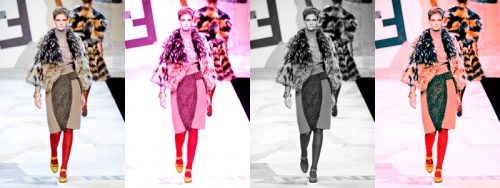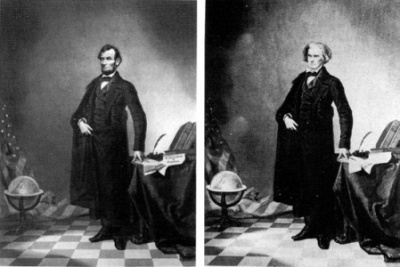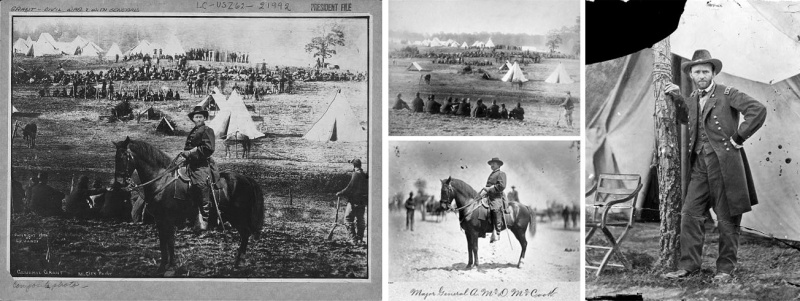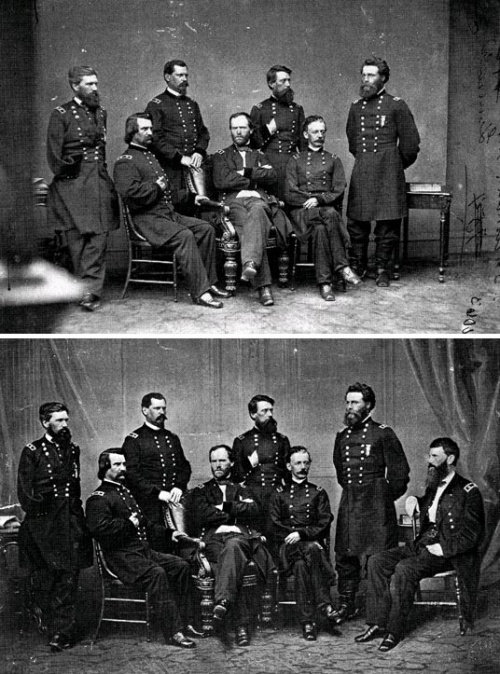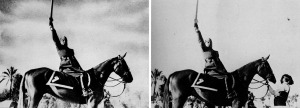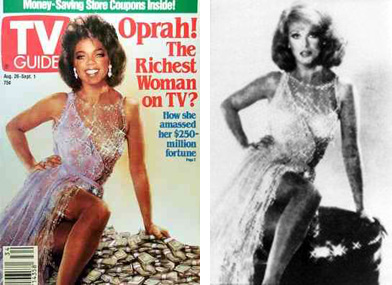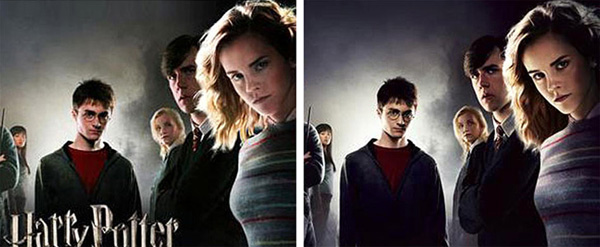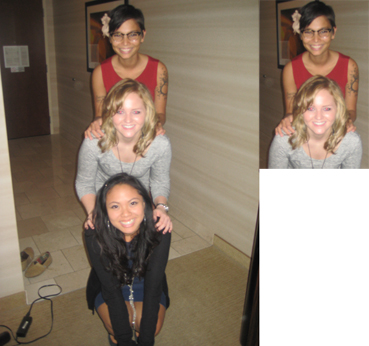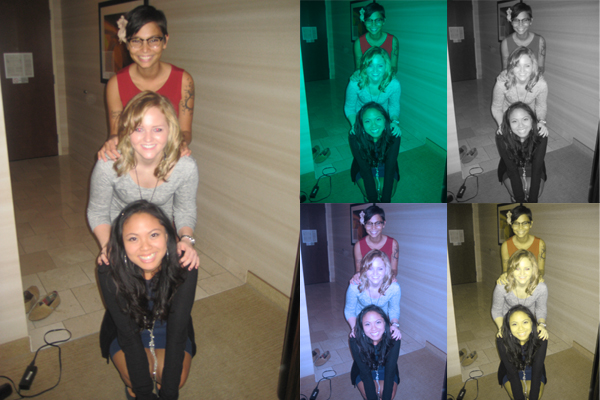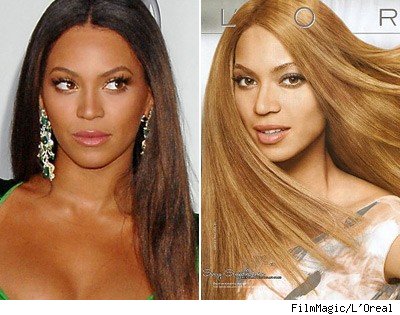Photo Editing
Contents
History
1860
The first notable edited photo came in 1860, not too long after Niepce invented the photograph. The photo below (left) places President Abraham Lincoln's head on the body of John Calhoun's body.
1864
In 1864, there is a depiction of General Ulysses S. Grant during the American Civil War. In reality, three separate photos were combined to create the final product (right).
1865
This stately scene shows General Sherman with all of his generals. However, one of them was not in the original photograph and was added at a later date.
1942
In 1942, Benito Mussolini had his horse trainer removed from the picture to appear more heroic. [1]
1987
In 1989, Oprah's head was placed on a body from an advertisement for the gown. Neither the gown designer nor Oprah were notified about this ad before it went public.
2007
In 2007, the popular movie series, Harry Potter, released a promotional movie poster for The Order of the Phoenix, with the actress Emma Watson's chest enlarged.
Basics of Photo Editing
Digital photos are stored on computers in a form of a grid containing elements, also known as pixels. Each pixel has its own information, and modern photo editing programs such as Adobe Photoshop or Corel's Paint Shop Pro are programmed to allow the users to change the information of each pixel individually or in large clusters. On a large-scale, this alters the entire image. These programs' algorithms have become so fine-tuned that if matched with a skilled user, it may be very difficult to detect any alterations of a photo.
Techniques
Cropping
Cropping is used to show a selection of the picture.
Color Manipulation
Image editing software allows user to change the color of a picture.
Color manipulation is used in popular media to lighten the skin tone of dark-skinned celebrities.
This cosmetic ad lightened musical artist Beyonce's skin.
Liquify
The liquify filter is one of the most powerful tools in Adobe Photoshop. It allows user to disorts pixels without losing quality. This filter allows us to push, pull, rotate, reflect, pucker, and bloat the pixels of any image. Changeable properties with the liquify filter are Forward Warp, Reconstruct, Twirl, Pucker, Bloat, Push, Mirror, Turbulence, Freeze / Thaw Mask, Hand and Zoom. [2] An example of the liquify tool can be seen in the 2007 Harry Potter example, where the artist bloated the chest area of the female actress.
Controversial Edited Photos
University of Wisconsin at Madison
University of Wisconsin at Madison wanted to portray student diversity in one its brochures by inserting an African-American student in the crowd of white students. The original photograph was taken in 1993 and the additional student was added from a picture taken in 1994.
2006 Lebanon War Photographs
Refers to when Reuters, the news agency in New York, was caught publishing altered photos of the Lebanon War in 2006. Reuters fired photographer Adnan Hajj, who used a software editing program to manipulate many of his war photos. CAMERA, a pro-Israel media watch organization, said that the alleged photographic manipulations were used by the mainstream media in an attempt to sway public opinion and paint Israel as an aggressor, and suggesting that Israel was guilty of targeting civilians. [3]A film released on the YouTube video sharing website compares the two images, and appears to show striking similarities between the photograph used by Reuters on both July 24 and August 5. [4]
H&M
H&M, a popular clothing store [5], has recently been under fire for their clothing ads. H&M has been using computer-generated bodies and using real models head. This head-body disconnet was noticed by a Norway company, Bildbluff, a site that identifies photos that have been edited. H&M has admitted to using these computer-image bodies and converging it with a model's head. They maintain that the reason for using this questionable practice is to steer the customers' attention to the articles of clothing and away from the model herself.[6]
Ethical Implications of Photo-editing
Photo editing can have all kinds of implications. It can either be used to recover an important image that has been distorted, or it can be used to purposely distort reality. Any alteration on reality has dangerous implications, because it will create cognitive dissonance with reality. Photoshopping (another term for photo-editing) has become so advanced that most people cannot tell if a photo has been edited, and some people may be influenced to strive for and/or believe false information that the edited photo is displaying. When it comes to visual memory, it is the human mind's strongest memory component, meaning people are more likely to recall an event based on visual proof versus auditory story telling. [7] Photo-editing can be harmful because it is a powerful tool that can be used to deceive people. The most apparent issue with photo-editing comes from the magazine industry. Celebrities, typically women, who grace the pages of media publications are usually photoshopped into the extreme ideal of perfection. In most women's magazines today, all of the models on the covers and advertisements are portraying a world with no blemishes, even skin tones, small waist, large breast, highly whitened teeth, and no body-fat. This type of content sets a standard for women that is impossible to maintain. Such physical representations can have a negative effect on women and especially on youth.
Photo editing programs such as Photoshop and other image editing programs within photo taking equipment, such as cameras, also have privacy implications. Unknown to many users, photo editing cameras and other programs are able to embed certain information within pictures and movies. For example, if a person were to take a picture with a camera, certain information about the owner can be put within the photo. If one were to get a hold of that picture, that person find this embedded information within the picture. This could leave to compromising information of the user being put into the public domain. This same thing occasionally has been found to occur in photo editing programs as well. When a picture is edited, information about the users is put within the photo. When this picture reaches the public domain through online sites such as Flickr and Facebook, other people can find and interpret this information. This leads to information of the owner being released, without the owner knowing.
References
- ↑ http://www.cracktwo.com/2011/05/famous-doctored-photographs.html
- ↑ http://psd.tutsplus.com/tutorials/tools-tips/a-comprehensive-guide-to-photoshops-liquify-tool/
- ↑ http://www.camera.org/index.asp?x_context=2&x_outlet=2&x_article=1175
- ↑ http://www.youtube.com/watch?v=dJ5Rj4yBGdU
- ↑ http://www.huffingtonpost.com/2011/12/05/hm-fake-model-bodies_n_1129864.html#s520429
- ↑ http://www.thesun.co.uk/sol/homepage/news/3981561/HM-under-fire-for-using-completely-virtual-models.html
- ↑ http://www.unisci.com/stories/20013/0726014.htm
